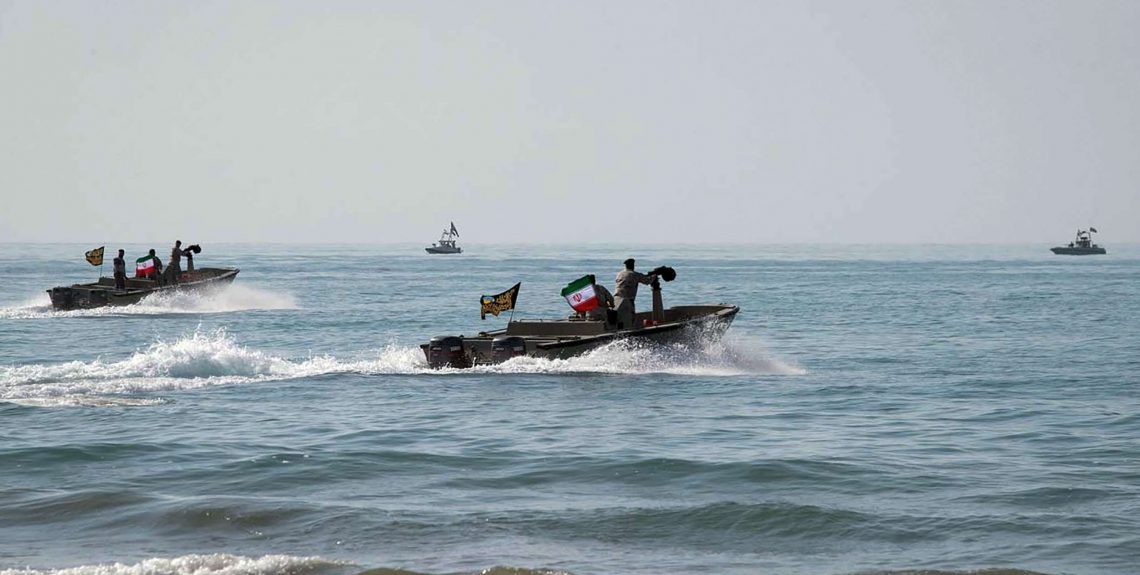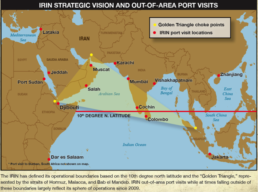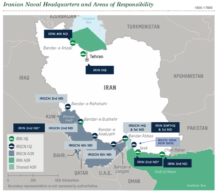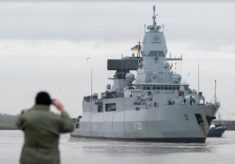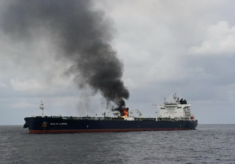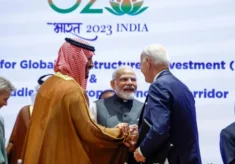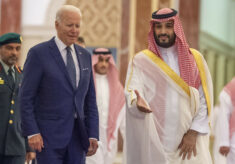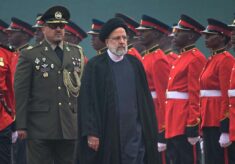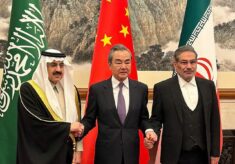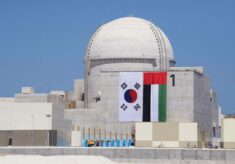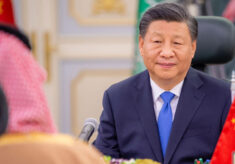Source: US Navy, ONI, Iranian Naval Forces, February 2017
Iran is strengthening its maritime power by developing or opening new naval military bases, logically following a strategy aimed at bypassing the Hormuz Strait chokepoint, thus projecting capabilities in the Arabian Sea and the Western Indian Ocean and changing the perspective on its own geostrategic limitations determined by a closed sea basin (see ONI map).
The Sepah Navy commander (Islamic Revolutionary Guards Corps Navy), Alireza Tangsiri, announced the opening of a permanent military base in the Indian Ocean by March 2021. According to Tangsiri, the naval base would increase security in the Gulf of Oman, protecting fishing and industrial shipping from piracy and some foreign warships [Mehr News Agency, “IRGC Navy to establish permanent base in Indian Ocean: navy cmdr.”, June 22, 2020; MEMO, “Iran to set up new base in Indian Ocean”, June 23, 2020]. No details were offered regarding the place [N.o.E. according to previous Sepah Navy commanders’ statements and current information on Iranian political influence the most logical site could be in Sri Lanka, while Indonesia would be less probable].
In the meantime, the 24 September 2020, Iran opened a naval base near the port of Sirik (Hormuzgan), east of the Hormuz Strait (see below, DIA map). After six years of construction, the Shaheed Rahbari base was inaugurated in the presence of General Hossein Salami, the commander of the Revolutionary Guard (IRGC), with the purpose of establishing “full control” on the Strait [Patrick Sykes, “Iran’s Revolutionary Guard opens new base on Hormuz Strait”, Bloomberg, September 24, 2020].

